Colin Murdoch: Aotearoa's Quiet Genius
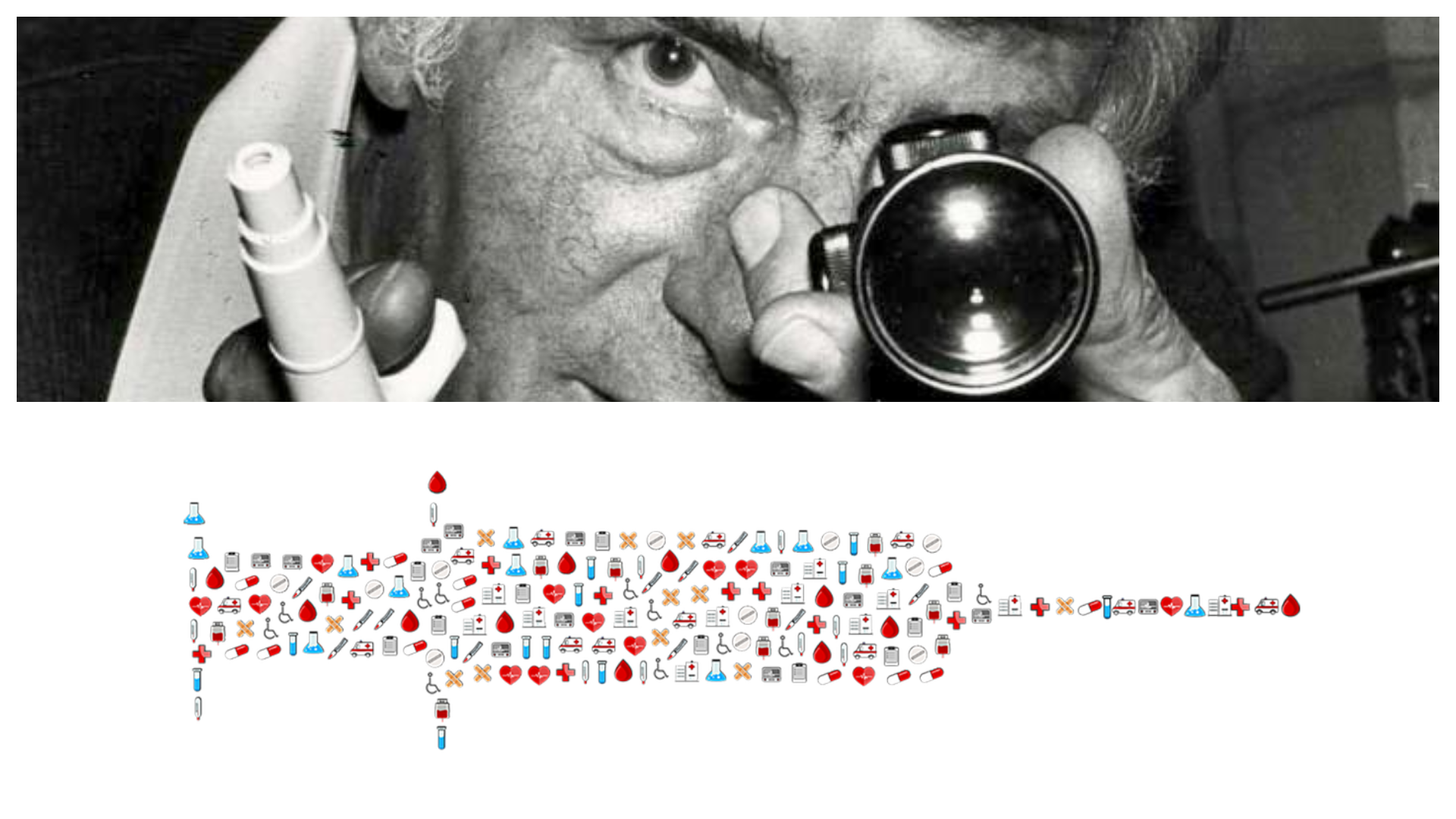
One day in 1939, there was a special 10-year-old boy from Christchurch who was fascinated by animals, chemistry, and mechanics. Despite dyslexia giving him a bit of trouble in his schoolwork, this boy would go on to become one of Aotearoa’s most honoured inventors, saving countless lives, and whose innovations are with us every day.
Already showing signs of having exceptional mechanical and mental skills, the boy was said to have a “mind like a corkscrew,” ever turning over problems in his brain until hitting upon a surprising solution.
On this particular day, he spent the afternoon mixing nitrates and sulphuric acid, resulting in gunpowder. So, as a little child genius would do, he then created a homemade firearm using a wick and a small asbestos-filled hammer, before using it to hunt rabbits. At age 13, he was awarded the Royal Humane Society Medal for saving a drowning man in the New Brighton estuary. It would not be the last life he would save.
Unexpected Inspiration
Fast-forward to 1952 and this boy, now a young man of 23, was on a plane and making notes with a fountain pen. As was his way, he took the pen apart to study how it worked. Lots of us have done that. But, for him, that wasn’t enough: his corkscrew mind turned, imagining other useful things that this sort of device could do, other than simply putting ink to paper.
But, now, that’s exactly what he did do: quickly reassembled the pen, put ink to paper, and drew a simple sketch of a device that would revolutionize medicine and is today the centrepiece of our fight against COVID-19: the modern disposable hypodermic syringe.
This special man would continue exploring, innovating, and problem-solving on a global scale for decades, becoming one of Aotearoa New Zealand’s most productive and decorated inventors with over 46 patents to his name. That name: Colin Murdoch.
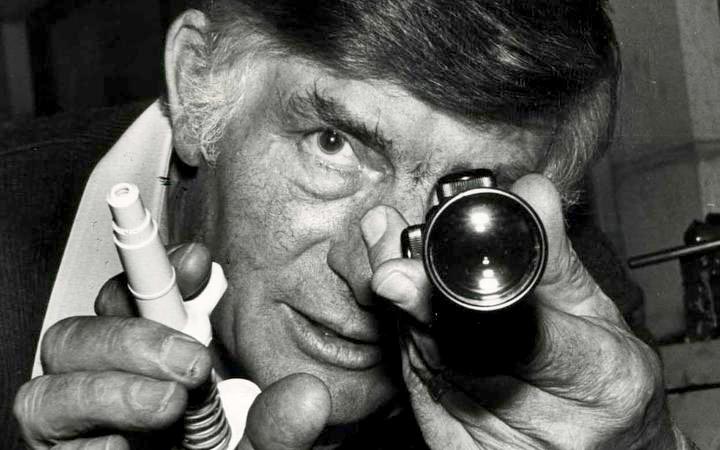
Inventor, chemist, pharmacist, veterinarian, Timaru‘s Colin Murdoch was celebrated as one of the 100 most influential people in the South Pacific by Time magazine; named to the Queen's Birthday Honours List 2000; winner of multiple gold medals at the World Inventors’ Fair in Brussels; made an Officer of the New Zealand Order of Merit for his services to inventing; and, in 2007, was featured in a series of New Zealand Post stamps. Yet, to the day, many in Aotearoa do not know his name.
Don’t Fear the Needle
Before detailing Murdoch’s many other inventions, let us celebrate the affordable, everyday, single-use, disposable, plastic, hypodermic syringe. This simple invention of Murdoch's has potentially saved millions of lives and prevented even further the spread of deadly diseases.
Various kinds of syringes have been used since at least the 1st century AD. In the 9th century, the first known use of a glass syringe was created by an Islamic eye surgeon to help remove cataracts. Native Americans created early hypodermic needles and syringes using "hollow bird bones and small animal bladders.”
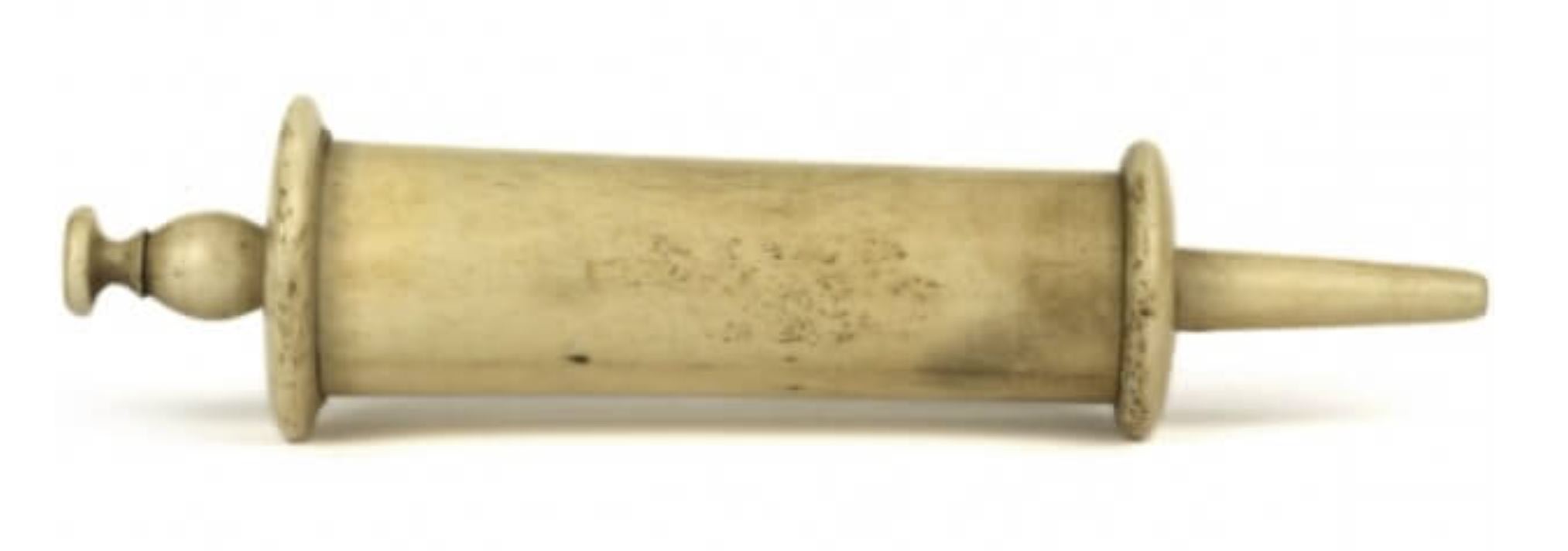
But what we know as the "syringe" was developed in the 1850s; made of silver, a needle fine enough to pierce skin, a screw mechanism to dispense fluids, and, critically, a plunger to inject them.
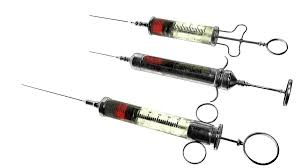
In 1946, Chance Brothers in the West Midlands, England, produced the first all-glass syringe with an interchangeable barrel and plunger, which allowed for mass-sterilisation of components.
Not ten years later, Colin Murdoch was granted New Zealand and Australian patents for a “disposable sterile prefilled hypodermic syringe type A.”
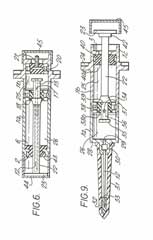
Before Murdoch’s innovation, pricey glass or steel syringes were used for vaccines and shots of all kinds. Think multiple injections for multiple patients, which invited cross-infections, even when properly sterilised. Just imagine if glass syringes were used during the depths of the HIV epidemic or, now, in our age of COVID-19?
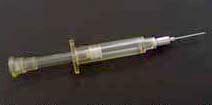
But at the time, the New Zealand Department of Health didn’t see the point. Speaking to The Lancet, Murdoch's friend and collaborator Ray Avery said, “Colin’s device was almost rejected, the New Zealand Department of Health said it was ‘too futuristic and would not be adopted by medical staff or accepted by patients.’ It took at least 15 years from the original patents being filed for there to be any significant uptake of the device.” The syringe was eventually produced and marketed by Tasman Vaccine, who saw huge profits from its decision.
Undeterred, Murdoch instead successfully applied for patents in Australasia, and, in time, the syringe became essential in every medical facility in the world.
According to the WHO, there are 16 billion injections administered every year, using Murdoch’s creation. Around 5 percent are for immunizing children and adults, and 5 percent are for other procedures like blood transfusions and injectable contraceptives. The remaining 90 percent of injections are given into muscle or skin to administer medicines. Plastic, affordable, single-use. Brilliant. The next time you go for a jab, you know who to thank.
Endless Innovation
Having created such a life-saving innovation, many inventors would have called it a day and basked in the warm glow of a job well done. But not Colin Murdoch; his restless corkscrew mind had more, so much more, to create.
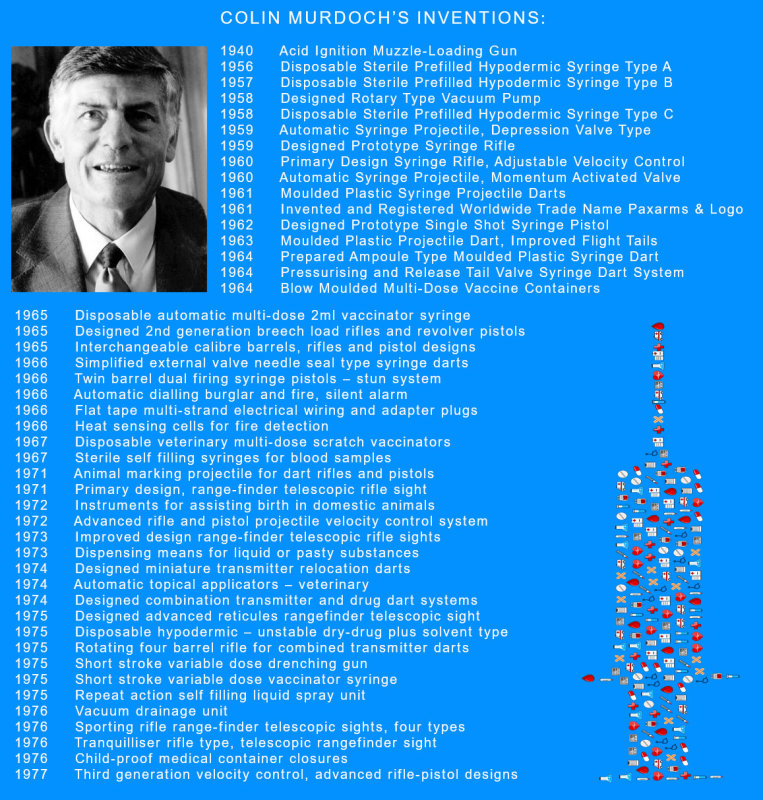
Notable among Murdoch's other patents is the tranquilising dart gun (1959), inspired by his work as a veterinarian, which allows for drugs to be administered to large animals safely from a distance. Think how this has helped large animal vets, for instance, or researchers studying endangered species like tigers. (In 1979, the gun was first used on a human. An Auckland man took his wife hostage, resulting in a dramatic Armed Offenders Squad call out. Talking to a police marksman via telephone, Murdoch was able to instruct him on where to shoot the offender and at what ‘setting’ to have the gun velocity.)
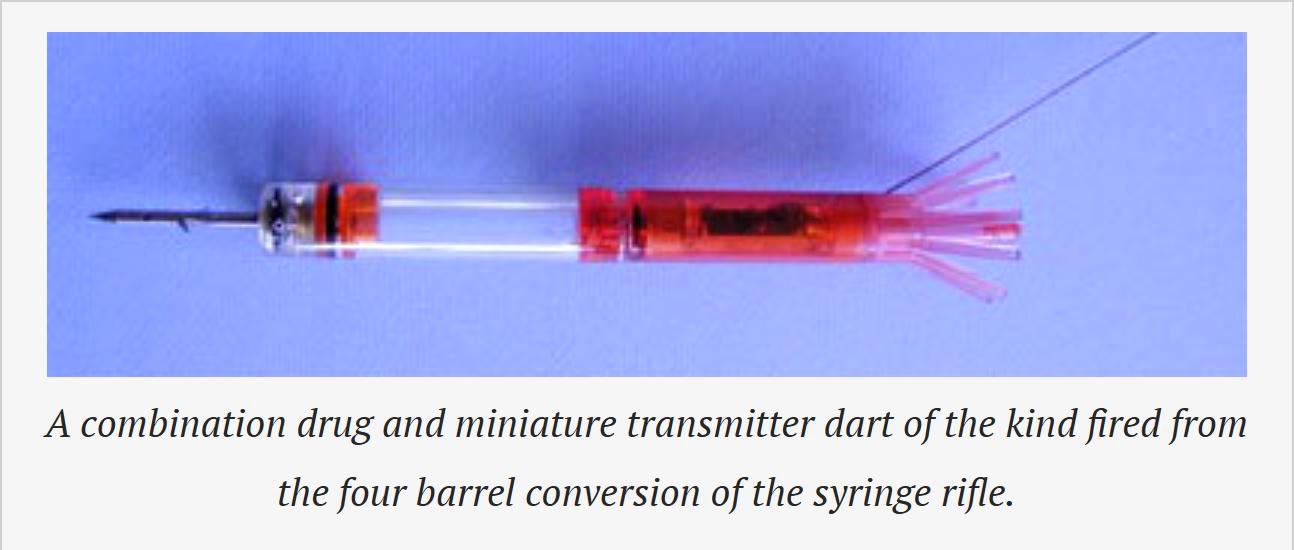
Other patents include the silent burglar and fire alarm (1966). This automatic system silently initiated a phone call to police or other emergency services. Many modern fire alarms work on this same principle. Finally, another lifesaving innovation we take for granted is the child-proof bottle cap for medicines (1976). Murdoch's design was based on the lack of strength and coordination in little fingers; he even created a version that would enable disabled adults to open the bottle.
Lasting Legacy
When asked how he had achieved all that he had, Murdoch replied that it was due to “Equal parts knowledge, experience, and lateral thinking.”
After decades as a world-class inventor, husband, and father of four children, Colin Murdoch passed away in Timaru in 2008 at the age of 79.
With so many patents to his name, it would be easy to assume that Colin Murdoch earned wild riches from his work. In fact, no. For one, he chose not to sue the many companies that violated his patents, satisfied instead that they were being put to good use, often adding, “Patents give you the right to sue but not the money to do it.” He was too busy inventing to get caught up in lengthy and expensive lawsuits.
Mostly, as his widow Marilyn told RNZ in 2019, “I think he was pleased to see his inventions being used. There was a certain satisfaction knowing that he’d invented them. Money hadn’t really been the primary mover.”
Oh, and that old ink pen that started it all? It was donated by Marilyn Murdoch to the South Canterbury Museum in 2018.
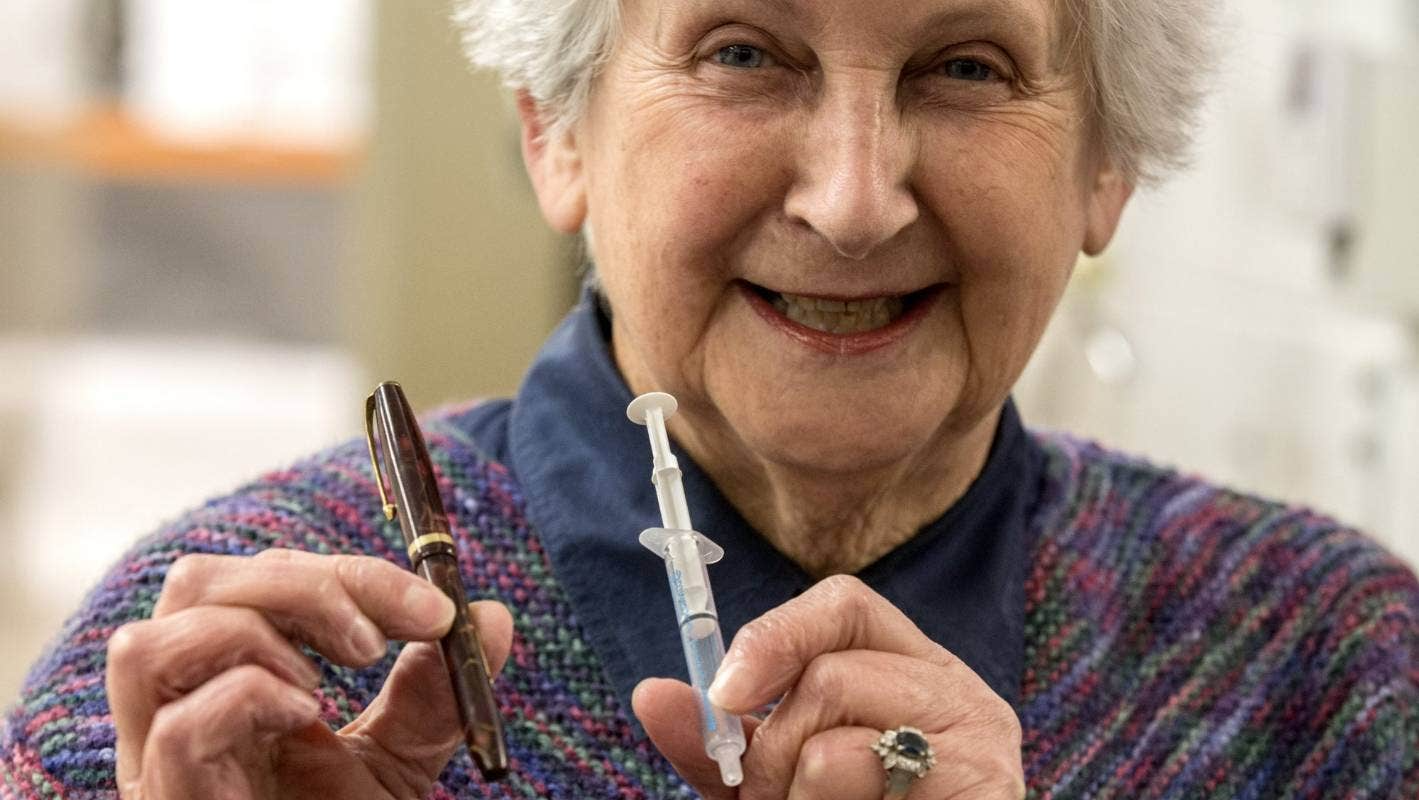
Now, let's give a quiet thanks to Colin Murdoch and the many unheralded inventors out there who have made life better for all of us.
And somewhere, right now in Aotearoa New Zealand, there's a special little child playing with a toy, or with a pen, taking it apart, and imagining what else it just might do.
Story by Cliff Hahn, Content Producer, MOTAT
Read More:
The History of the Hypodermic Needle: Evolution with a Point!
Colin Murdoch's Pen Latest Item for South Canterbury Museum - Stuff
Colin Albert Murdoch - Timaru Hall of Fame
Colin Murdoch, Dreamer for Millions - NZEdge.com
A Very Bright Idea - RNZ
So, Who’s Afraid of Needles?
Citation:
Hahn, Cliff, 2022. MOTAT Museum of Transport and Technology. Published: 31 March 2022. URL: https://www.motat.nz/collections-and-stories/stories/aotearoas-quiet-genius